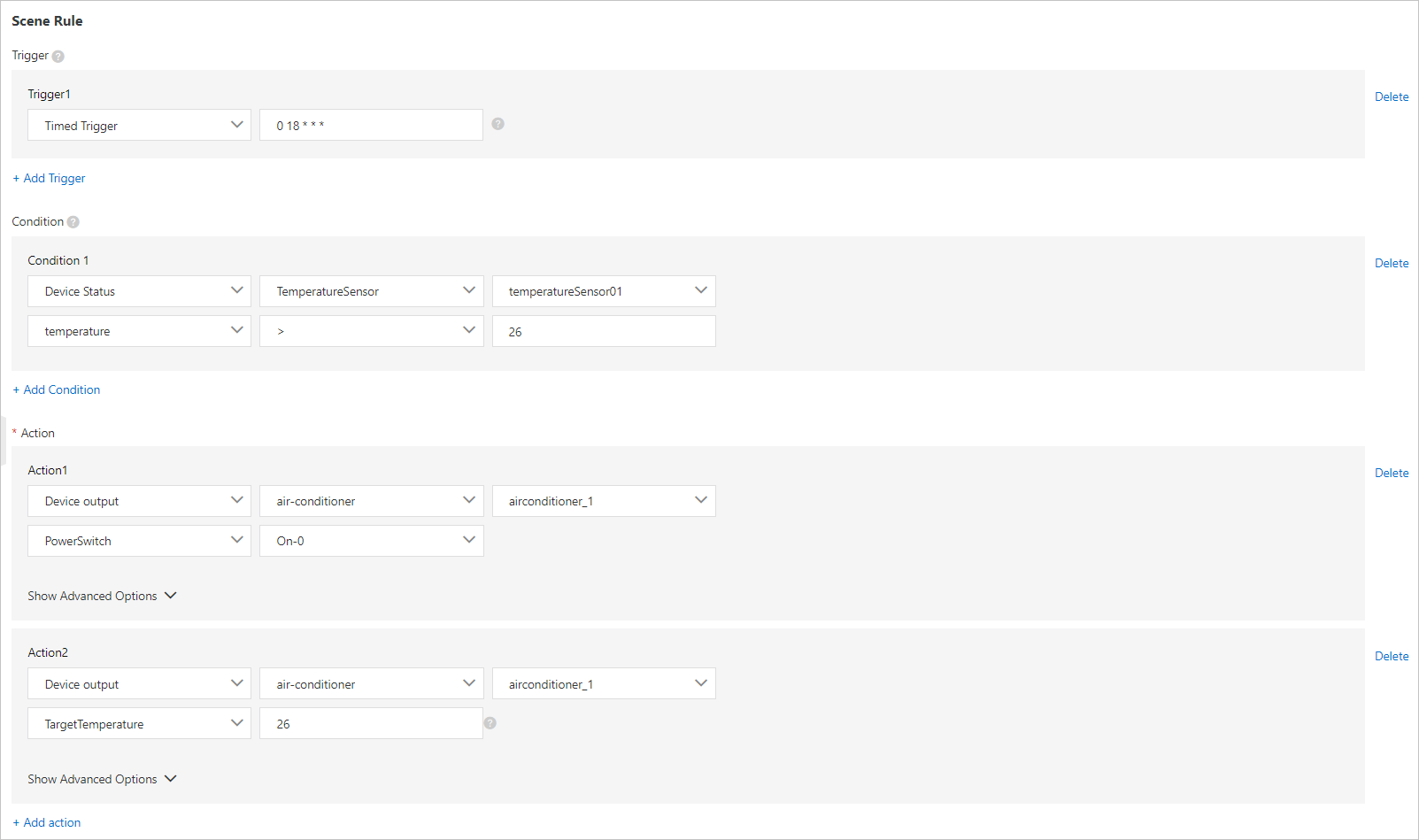Scene orchestration is a feature that is provided by the rules engine of IoT Platform. Scene orchestration allows you to create automated workflows in a visualized manner. You can create scene orchestration rules to configure complex interactions between devices and deploy the rules in the IoT Platform console or at the edge.
To create a scene orchestration rule, perform the following steps: Log on to the IoT Platform console and choose Rules Scene Orchestration. On the page that appears, create a scene orchestration rule. Each scene orchestration rule consists of triggers, conditions, and actions. This rule model is called the TCA model. TCA is short for triggers, conditions, and actions.
The scene orchestration feature is available for public instances of the new version and Enterprise Edition instances in the China (Shanghai) region.
This update does not affect users who have configured and are using the feature.
The first time you use the scene orchestration feature, we recommend that you use Event Response Service instead.
For more information about IoT Platform instances, see Overview.
When an event change or a property change that is specified in a trigger occurs, IoT Platform determines whether to perform the actions that are specified in the rule based on the specified condition. The type of the property cannot be DATE, ENUM, STRUCT, or ARRAY. If the conditions are met, IoT Platform performs the specified actions. Otherwise, IoT Platform does not perform the actions.
For example, you arrive home at 18:00 every day. In the summer, you want the indoor temperature to be cool and comfortable when you get home. In this case, you can create a scene orchestration rule to automate the air conditioner.
The following figure shows the settings of a sample scene orchestration rule.

The following table describes the parameters.
Parameter | Description | Logical operator |
Triggers | This rule is triggered at 18:00 every day. For more information about how to write a CRON expression, see CRONTAB. | Or (||) |
Condition | If the indoor temperature that is reported by a temperature sensor is higher than 26°C, the action is performed. | And (&&) |
Action | Turn on the air conditioner and set the temperature to 26°C. | And (&&) |
For more information about how to create scene orchestration rules, see Scene orchestrations in the cloud.